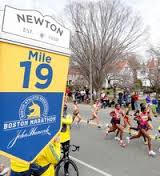This is a story about a church, a temple and a young man dedicated to feeding the hungry. For over two decades Project Manna at the Massachusetts Avenue Baptist Church in Cambridge has fed thousands of people a year from its little kitchen. And for 24 years Temple Emanuel in Newton Centre has been moved by the mission of this small yet mighty church to produce the eponymous Project Manna, a concert to raise critically needed funds to keep the food kitchen open. “It is,” says Rabbi Wesley Gardenswartz, Temple Emanuel’s senior rabbi, “a story about black-white, Christian-Jewish love, partnership and community building that has been going on for over two decades.”
 This year’s Project Manna concert on Wednesday, March 24, 2013 at Temple Emanuel, features Neshama Carlebach, daughter of the legendary Rabbi Shlomo Carlebach, and a star of Jewish music in her own right. Neshama and her band will celebrate the traditions of gospel and Jewish music with the Green Pastures Baptist Church Choir. Rabbi Gardenswartz notes that, “Neshama’s music is deeply moving and a salve for some of the suffering seen throughout the world.”
This year’s Project Manna concert on Wednesday, March 24, 2013 at Temple Emanuel, features Neshama Carlebach, daughter of the legendary Rabbi Shlomo Carlebach, and a star of Jewish music in her own right. Neshama and her band will celebrate the traditions of gospel and Jewish music with the Green Pastures Baptist Church Choir. Rabbi Gardenswartz notes that, “Neshama’s music is deeply moving and a salve for some of the suffering seen throughout the world.”
Inspired to “repair the world” as well as by Temple Emanuel’s commitment to feeding the hungry Max Breslau, a recent Bar Mitzvah, decided to do more than attend the annual Project Manna concert. It began with Max’s older brother Mitchell who was required to do a community service project for his school in Needham. As Jane Breslau, the boys’ mother, points out there wasn’t much volunteer work for kids who were under sixteen. The Breslaus noticed that Temple Emanuel’s Brotherhood volunteered at the Mass Avenue Baptist Church’s soup kitchen and decided to commit to serving there for a year. A year soon stretched into two years and Max joined his brother and mother that second year as part of his Bar Mitzvah project.
Conventional wisdom holds that doing one thing three times becomes a habit. In the Breslaus’ case volunteering over time has become a passion. Monday evenings in the Breslau household belong to the Mass Avenue Baptist Church. Jane notes, “we take our commitment to the church and the guests at the soup kitchen as seriously as someone takes a sports commitment.” On a given Monday the Breslaus will be among the volunteers who serve upwards of seventy meals. They not only serve, but also help to prepare the supper. Jane notes that among the moving experiences at the kitchen are the prayers said before every meal. “Sometimes my sons will do a prayer and it will be a bracha—a blessing in Hebrew. Other times they’ll simply note how thankful all of us are to be there. We feel we are a part of the Mass Avenue Baptist Church family.”
As parents, Jane and Howard Breslau purposely pushed their sons out of their comfort zones. Neither boy had any idea what a food pantry would be like. Much to their surprise, the boys’ perceptions of the homeless were shattered. “It wasn’t just a learning experience for my sons,” Jane notes,” they completely changed their assumptions about who was homeless. They saw how thankful these people were to be there. How respectful they were.”
Max, who became a bar mitzvah at Temple Emanuel last week, says that his time at the soup kitchen will go beyond his bar mitzvah project. “I love doing it every Monday. Everyone who comes and eats makes friends. There’s one guy who loves the Patriots and we talk about the team. With other people, we share how our week has gone. Everybody has a story and people don’t necessarily look homeless. You wouldn’t expect some of these people to be out in the street.”
Max also noticed the soaring temperatures inside the church during his summer service at the soup kitchen. “I decided to raise money for two ceiling fans and air conditioning window units.” At first the goal was to raise a thousand dollars. Max reached out to friends and family and to his temple email list. The response was so generous that he raised the goal to $2000. Max and his family called it the Fan Project, asking people to “be cool and become fans of the Mass Avenue Baptist Church Soup Kitchen.” As of this writing Max and his family have raised $1800.
As for their own parenting, Jane and Howard assert that their commitment to the soup kitchen has been a “ learning process.” Howard notes that it is “breathtaking” to see his family’s commitment every week. “It’s a joy to see their eagerness to go there. They’ve established friendships with the staff and guests that are very meaningful.”
Jane notes that, “everyone has a different perception of what a mitzvah is. It’s not something that should be easy or immediately fit into your life. You should make it fit into your life so that you’re giving back to the community. We began this project to help our children, but our time at the soup kitchen has had a profound effect on me too.”



